Sproxton Award for Photography - 2019 winner
Stefan Schlumpf is a Swiss artist, who completed his studies in MA Photography at London College of Communication (UAL) in 2019. Schlumpf's works deal with nature, perception and the effects of human being on nature. His work invite us to become aware of our senses, the people around us and the world behind us.
Artist statement
Flux – an installation, left to time. A paradoxical liaison between meticulous planning and deliberate coincidence. In my piece, Flux, I focus on the transience of the ecosystem and use my creative process to invite the viewer to think clearly about the fragility of nature and human intervention.
I chose a number of familiar materials, the criteria for me being their symbolic, formal and cultural significance. For example, carbon dioxide and the material coal, both substances that are characterised by endless metaphors, on the one hand in the fields of art and politics, and on the other hand in the environment.
Over two days, always starting from the exact same location, I recorded the course of time and happenstance with an analogue, medium-format camera. At the beginning, you see a pyramidal structure made of white cubes, a symbol that is familiar and used again and again, but not just in art and the artistic space.
When they are layers in a pyramid, the individual square blocks seem unimportant, but together they manage to become a familiar shape and thus become a synonym for culture and nature. Structure and form are reminiscent of ancient symbols of state, but in their abstract form remind one of an iceberg – I play with this dualism here.
My mountain is made up of carbon dioxide (CO2) and floats partially visible in a white space. The colours are reduced to a minimum, but are nevertheless present and recognisable in a variety of different shades of grey. The initially clear shape of a pyramid gives way over time to its original form, thus following the transformation of forms, structures and colours exposed to an environment that changes things and perhaps even causes their total disappearance.
Without additional external intervention, the initial form of the pyramid dissolves and intermediate stages occur – random transformations that eventually find another expression in the abstract form of a ‘Black Square’. The image of an original form remains, an abstraction that metaphorically does not only stand for the perception of climate change.
Gallery
-
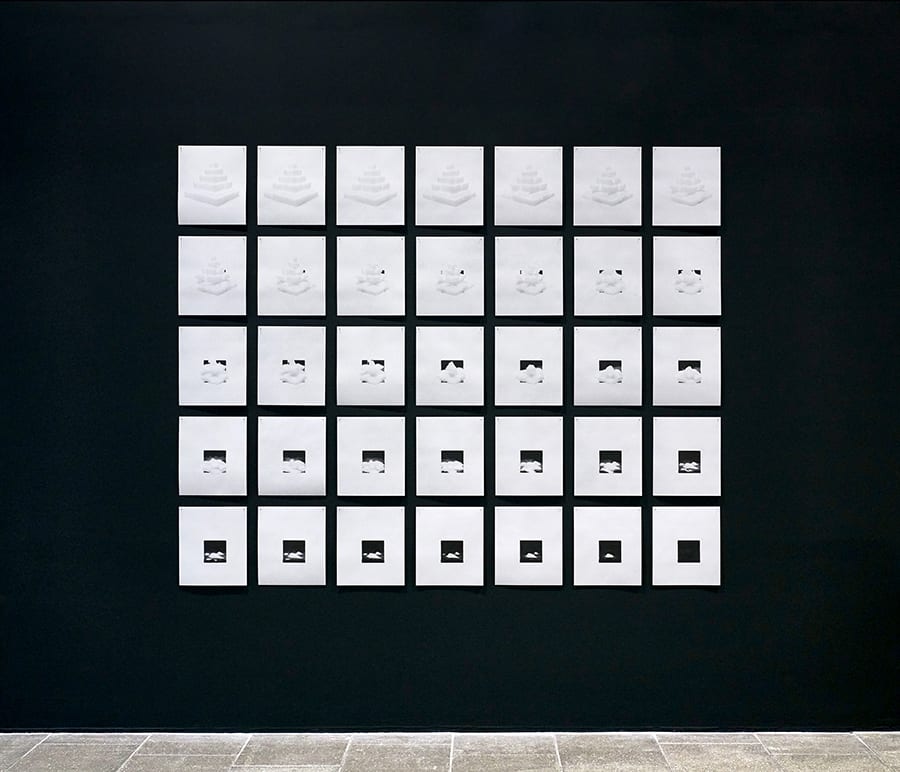
Stefan Schlumpf Flux 2019, Carbon Dioxide, Coal Image courtesy of the artist
-
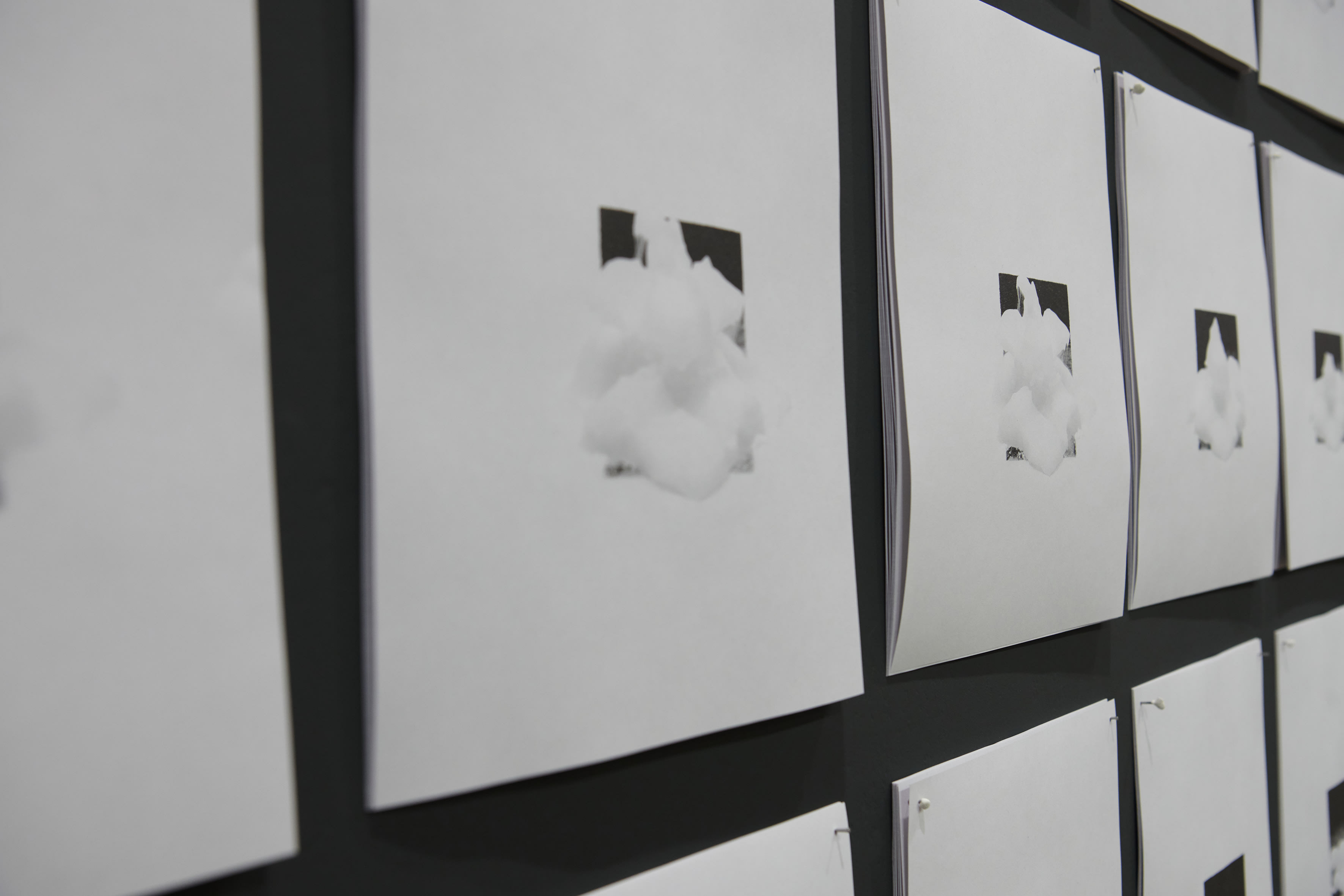
Stefan Schlumpf, Flux, 2019, Carbon Dioxide, Coal
-
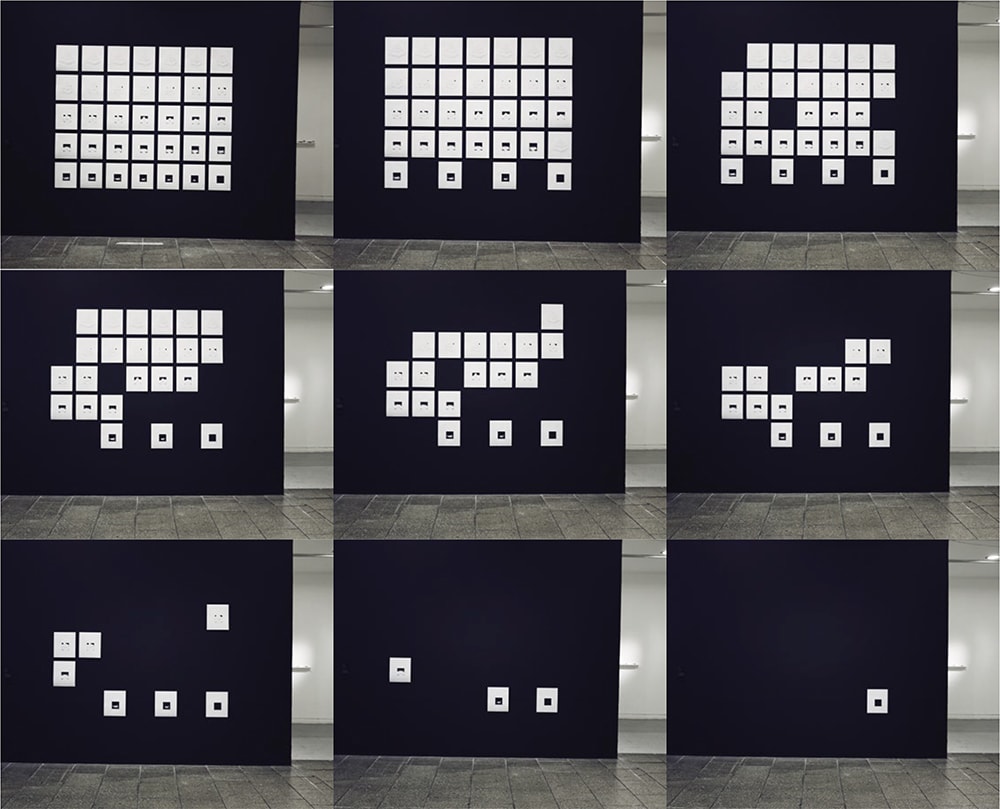
Stefan Schlumpf, Flux, 2019, installation, carbon dioxide, coal
-
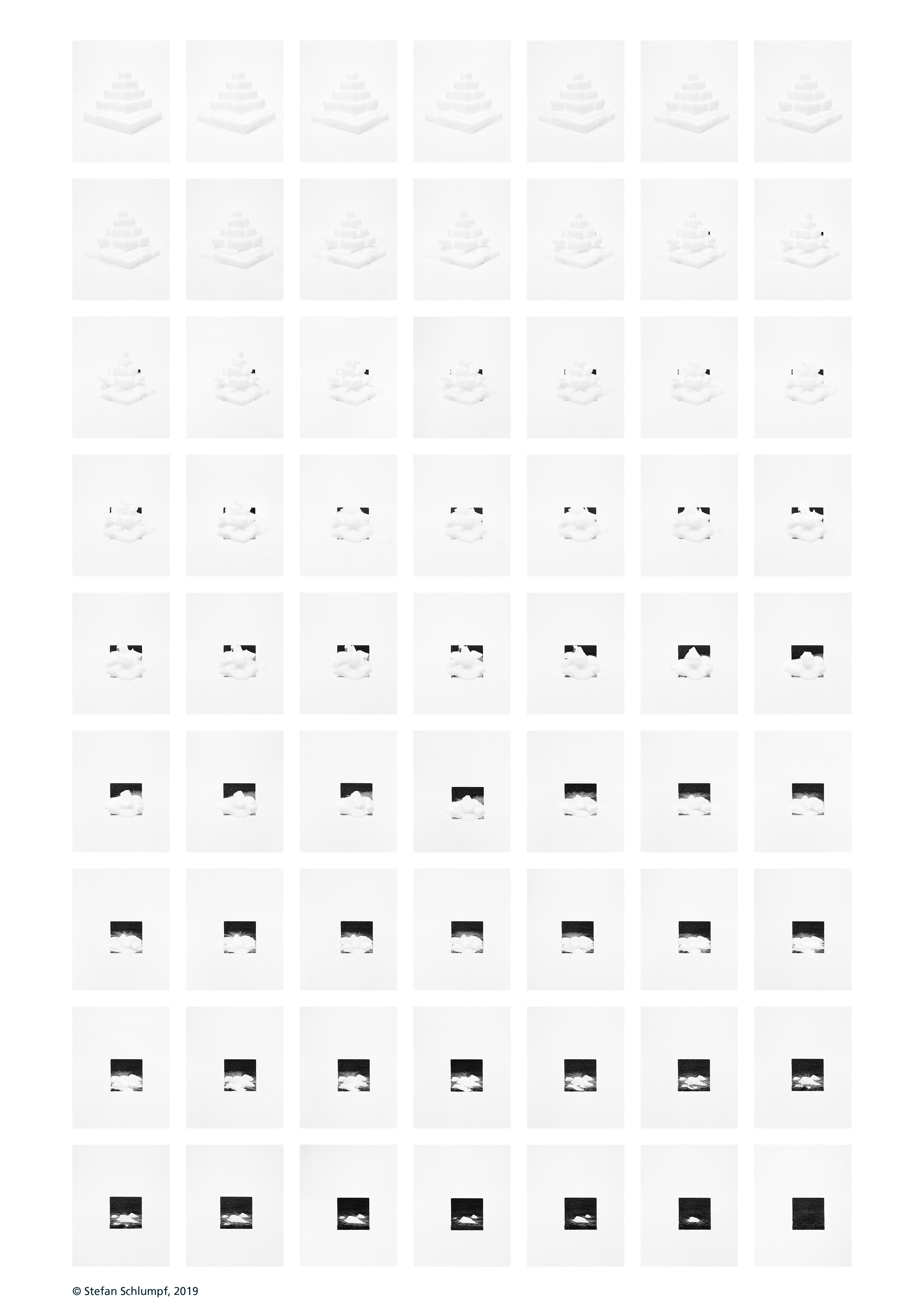
Stefan Schlumpf, Flux, 2019, installation, carbon dioxide, coal
-
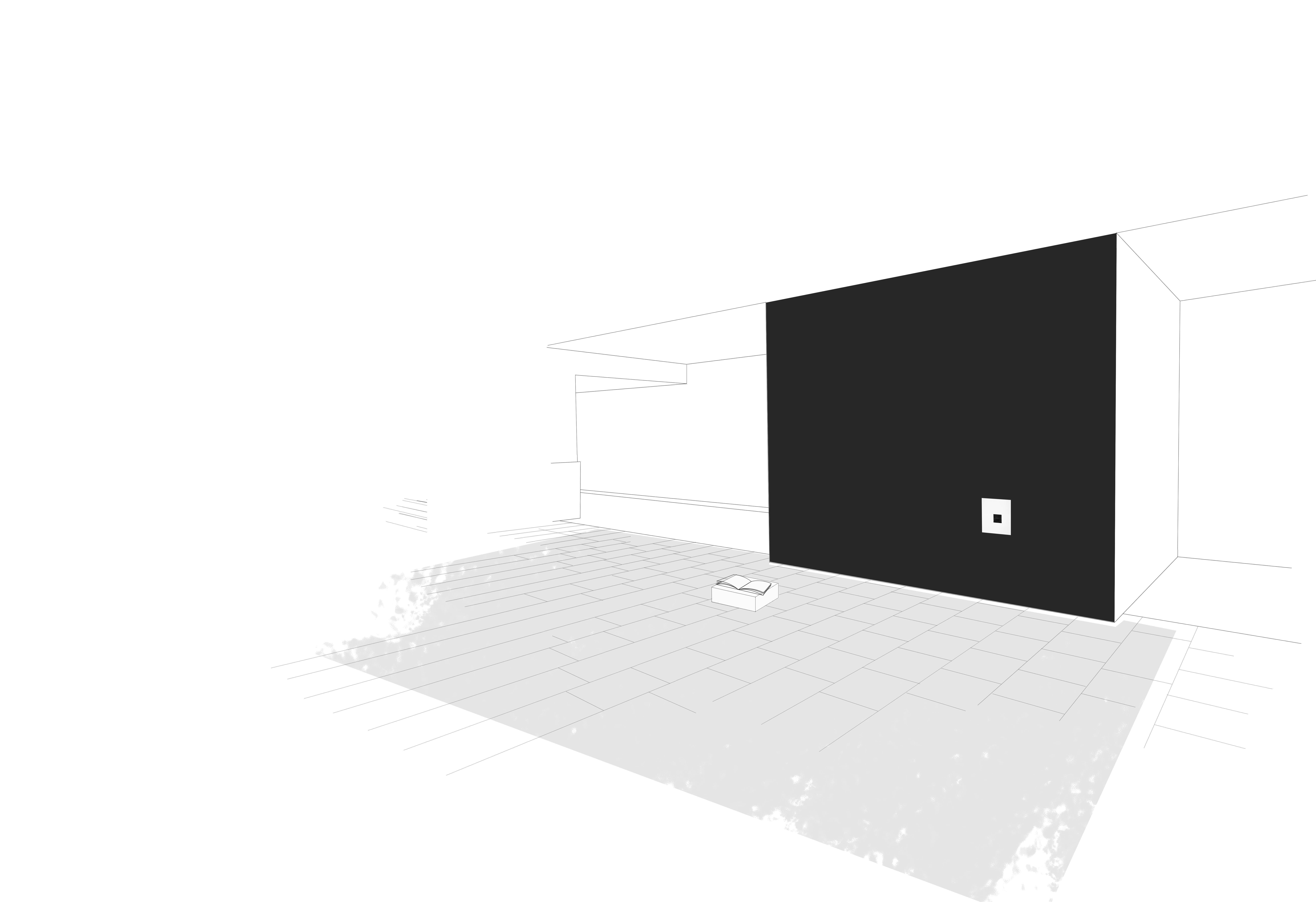
Stefan Schlumpf, Flux, 2019, Carbon Dioxide, Coal
-
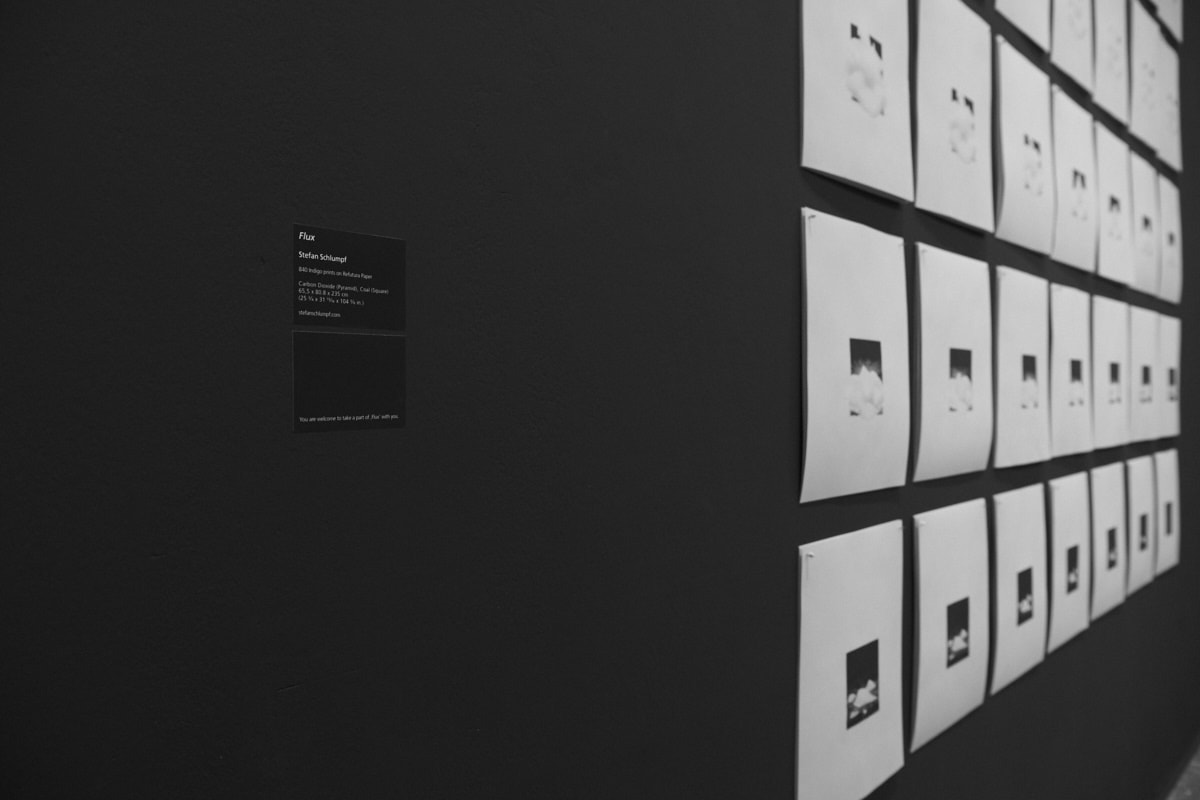
Stefan Schlumpf, Flux, 2019, Carbon Dioxide, Coal
The installation
My central intention in choosing an installation is to create a space for interaction between the viewer and the artwork Flux, and to invite people to become a part of the work. Viewers are encouraged to take away with them individual photographs which are hung on the wall as an installation.
Over time, the volume of the work is slowly reduced, and finally disintegrates over the course of the exhibition – the work changes irrevocably. For one thing, there is a direct parallel between the disappearance of the polar ice shields and the disappearance of my work of art.
For another, the parallel is seen between reckless action within the context of an art installation and the careless handling of our environment. The latter can be seen as a metaphor for the threatened end of the polar ice. In both cases, humans are initially unaware of the consequences. Only when the work has almost completely disappeared do they recognise the irrevocability of their actions and think about fading and disappearance, about loss and change.
The last moment in the photo series Black Square – as the only copy fixed on the wall – thus remains in place in order to raise questions about our coexistence with nature: How do we influence our environment; how do I want to go about dealing with it today and in the future?
While one views the work of art, and even after it has disappeared as a result of the viewer‘s participation, a book provides guidance about the work, the vision, the goal and the process.
Positioning the book on a low-down pedestal is an uncomfortable moment as visitors bend over and are forced to move.
Flux comprises a total of 63 photos; for reasons of space, a total of 35 of these are shown in this exhibition. From each copy hang 24 identical prints, one after the other – one for each hour of the exhibition.
See more of Stefan's work at stefanschlumpf.com.